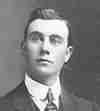Laurence Binyon Biography | Poet

The son of Quakers, Binyon was educated at St Paul's High School and Trinity College, Oxford. He was already writing poetry by 1890, and won the Newdigate Prize for one poem whilst still at Oxford.
After graduation, from 1893 he worked at the Department of Printed Books in the British Museum. In 1904 he married fellow historian Cicely Margaret Powell, and the couple had three daughters. He later moved to the Museum's Department of Prints and Drawings, becoming the Assistant Keeper of Prints and Drawings in 1909. In 1913 he was made the Keeper of the new Sub-Department of Oriental Prints and Drawings. Many of his books produced while at the Museum were influenced by his sensibilities as a poet, although some are works of plain scholarship - such as his four-volume catalogue of all the Museum's English drawings.
Although too old to enlist in the First World War, he went to the Western Front in 1916 to work for the Red Cross as a medical orderly with an Ambulance Unit. He wrote about his experiences in For Dauntless France (1918).
For the Fallen
He is best known for the poem For the Fallen, written while sitting on The Rumps, Polseath Polzeath, Cornwall, and first published in The Times in September, 1914. The seven-verse poem honoured the World War I British war dead of that time and in particular the British Expeditionary Force, which had by then already had high casualty rates on the developing Western Front. The poem was published when the Battle of the Marne was foremost in people's minds.
The fourth verse from that poem has gained an existence of its own and is known today as the Ode of Remembrance - one that applies to all war dead:
They shall grow not old, as we that are left grow old.
Age shall not weary them, nor the years condemn.
At the going down of the sun and in the morning
We will remember them.
"The Ode" is still regularly recited on occasions such as Remembrance Day and Remembrance Sunday in the United Kingdom and Canada and ANZAC day in Australia and New Zealand, and adorns numerous war memorials including The Cenotaph in Whitehall. It is customarily read by an old soldier. In Australia's Returned and Services Leagues, it is read out nightly at 6 p.m.
BINYON, LAURENCE (1869-1943), English poet, born at Lancaster on the 10th of August 1869, was educated at St Paul’s school, London, and Trinity College, Oxford, where he won the Newdigate prize in 1890 for his Persephone. He entered the department of printed books at the British Museum in 1893, and was transferred to the department of prints and drawings in 1895, the Catalogue of English Drawings in the British Museum(1898, &c.) being by him. As a poet he is represented by Lyric Poems (1894), Poems (Oxford, 1895), London Visions (2 vols., 1895-1898), The Praise of Life (1896), Porphyrion and other Poems (1898), Odes (1900), The Death of Adam (1903), Penthesilea (1903), Dream come true (1905),Paris and Oenone (1906), a one-act tragedy, and Attila, a poetical drama (1907); as an art critic by monographs on the 17th-century Dutch etchers, on John Crome and John Sell Cotman, contributed to the Portfolio, &c. In 1906 he published the first volume of a series of reproductions from William Blake, with a critical introduction.
Laurence Binyon:
Poems
|
Best Poems |
Short Poems
|
Quotes